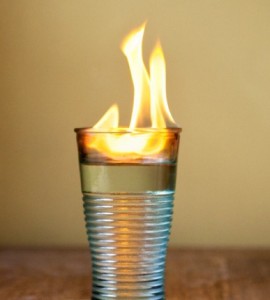Natural gas was a mystery to humankind when it first emerged in Iran prior to 2000 BCE. The gas seeps, most likely ignited by lightning, were described as “eternal fires” by early populations. The flames were the center of religious worship for ancient Persians and other fire-worshipping religions. The Greeks thought the wells to be of supernatural origin and built a temple over one in order to house a priestess, the Oracle of Delphi.
The Chinese were the first to productively use natural gas when, in 500 BCE, they found it while drilling for salt. The gas was guided from the source through bamboo pipes and used to heat brine, cook food, and make lamps.
Natural gas was first commercialized in Britain in 1785, after which the concept soon spread to the U.S.
Fracking, slang for hydraulic fracture, is the process of extracting this natural gas from the ground. Water, sand, and chemical additives are pumped deep into the well to create sufficient pressure to fracture the rock and cement and release the gas.

This growing industry now meets 24 percent of the U.S. energy demand.
Natural gas is now being put to use in vehicles and factories, and the use is expected to grow, due to the fact that the combustion of natural gas is comparatively cleaner than other fossil fuels.
While natural gas is the cleanest burning fossil fuel, it is in no way a clean energy source.
Effects of Fracking on the Environment:
- River and drinking water contamination- restoration is often so costly as to not be attempted
- Fracking and associated activities (trucks delivering material, factories, etc.) contribute to ozone smog and soon, unnecessary deforestation and nutrient pollution of soil
- Damage to natural resources and reduction in populations, such as mule deer
- Contamination of groundwater
- Fracking induced blowouts and earthquakes
- Oil spills
- Developmental and genetic mutations due to disruption of hormones
While efforts are made to keep the population safe from fracking during the process, they fail utterly.

The water intensive process uses millions of gallons of fluid, including chemicals known to cause cancers.
Landowners are often forced to allow the development of a well on their land are often forced to leave after the development of incurable illnesses, rashes and hair loss in themselves, pets, and farm animals, and an unsafe water supply. Rivers and taps near a hydraulic well have been known to bubble and even catch fire when heated.
The drilling of the well devalues the land, making it suitable for almost nothing else.
Fracking companies use 700,000 gallons of water a day, causing water shortages in surrounding areas that are often already strained for water, such as Texas and Colorado.
The supply of fossil fuels buried in the earth is limited, and the amount used is destructive. Cleaner alternatives to fossil fuels such as natural gas can be replenished and reduce global warming, such as photovoltaic solar power, wind energy, hydroelectricity, which uses falling water or tides to create electricity, geothermal energy, which is the process of extracting renewable heat from the earth , or biomass energy, which is the process of retrieving energy from living or recently living organisms (composting).
Learn more about how fracking affects your community- physically, economically, and politically in the documentary Gasland.
Work to ban fracking in your area at http://www.foodandwaterwatch.org/water/take-back-the-tap/connect-with-us/




















